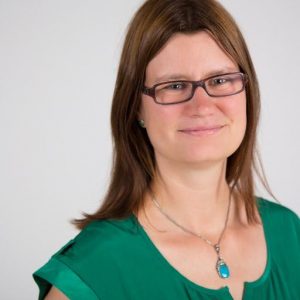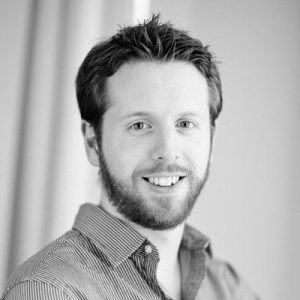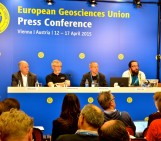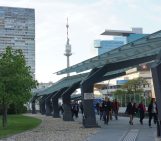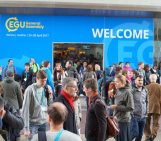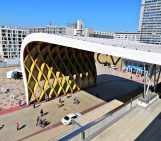
With more PhD and postdoc positions than there are tenured posts, landing a permanent job in academia is increasingly challenging. For some, years of funding and position uncertainty, coupled with having to relocate regularly is an unwelcome prospect. A changing job market also means that aspiring to the traditional, linear career path might be an unrealistic expectation. Skills acquired by those striving for an academic career (analytical skills, time and project management, persistence – writing a thesis requires it by the bucketload!) are highly valued in other job sectors too.
During a short course at the 2017 General Assembly, a panel of current and former geoscientists discussed their experiences in jobs both inside and outside academia. They offered tips for how to pursue their careers paths and what skills served them best to get there.
In this blog post we profile each of their jobs and offer some of the highlights from the advice given during the session at the conference.
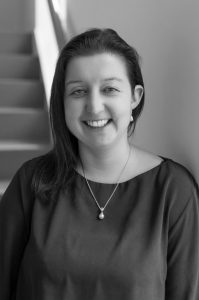
During the panel discussion Victoria stressed the importance of building a strong professional network, both inside and out of academia.
Victoria O’Connor (Technical Director at Petrotechnical Data Systems)
Victoria gained an undergraduate master degree in geology from the University of Liverpool in 2007. Since then, her career has focused around the oil industry, but has seen twists and turns, which have relied heavily on her building a varied skill set.
For almost six years after graduation, Victoria worked at Rock Deformation Research Ltd (RDR), a spin out company from the University of Leeds, which was eventually acquired by Schlumberger. She held various roles throughout her time there, eventually becoming Vice President. The role relied heavily on her technical expertise as a structural geologist, as well as people management and organisational skills. In 2013, she moved to The Netherlands to work the Petrel technology team at Shell, where she managed various geoscience software development projects.
Her experience eventually enabled her to set up her own geoscience consulting company which was acquired by the PDS Group, through which she now manages the Geoscience products and services division, leading a 40 strong team of geoscientists and scientific software developers, developing cutting edge technologies for the oil and gas industry in collaboration with various academic institutions. In addition she also holds a visiting researcher position at the University of Leeds where she provides teaching and consultancy support. In addition, she also edits the European region AAPG newsletter.
During the panel discussion, Victoria stressed the importance of building relationships and developing a network of contacts. The benefits of building a strong professional network, both inside and out of academia are far reaching: job opportunities, joint collaborations, career development prospects. In her current role, she is developing technology with academic partners she first met over ten years ago at the University of Leeds.
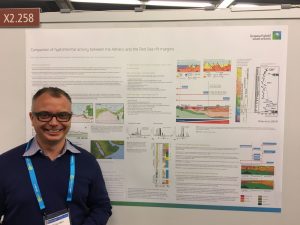
getting on the career To get on the career ladder make sure you have a well written cover letter and CV, says Philip.
Philip Ball (Strategic Planning and Optimization Team & Geological Specialist [Rifted Margins] at Saudi Aramco)
Philip’s career certainly falls in the windy road category, rather than the linear path. It has involved a number of switches between industry and academic positions which have taken him all over the globe. His positions have always had an oil industry focus. He has lived through a number of market slumps, resulting in redundancies and an uncertain career path at times.
During the panel discussion Philip, highlighted adaptability and flexibility (skills certainly gained during research years) as a key to his success. Landing his first position was partly down to his willingness to be flexible. In addition to being proactive, publishing, attending conferences and meetings, maintaining a network, never giving up is also critical. For example, he applied three times to Statoil between 2013 and 2015 before he managed to get an interview.
Before progressing onto a PhD, Philip enjoyed a short stint at the British Geological Survey and was a geologist for Arco British Ltd. Since gaining his PhD from Royal Holloway, University of London in 2005, Philip has held a number of positions at oil companies, including StatOil, ConocoPhillips, ONGC Videsh and Saudi Aramco.
His top tips, for getting on the career ladder is to make sure you have a well written cover letter and CV. This is critical whether applying for a student travel grant, research position or a position outside of the academic realm. Also do your research and do not expect chances to come to you. Use and visit the job boards online regularly to find positions in geoscience or other fields.
Xenia van Edig (Business Development at Copernicus.org)
Researchers are necessarily familiar with the world of academic publication (for more tips on how journal editors work take a look at this post we published recently), so it is hardly surprising this ends up being the chosen career of many former scientists.
Xenia Van Edig is one such example. Following an undergraduate in geography and PhD in agricultural sciences at Georg-August-Universität-Göttingen, Xenia took a sidestep into the world of scientific coordination and management before starting her role at Copernicus (publishers of open access journals – including all the EGU publications – and conference organisers).
Project management was a skill set Xenia developed throughout her time as a junior researcher. It has been a pillar stone of her career outside of academia too.
Robert McSweeney (Science Editor at Carbon Brief)
Robert holds an MEng in mechanical engineering and an MSc in climate change. He worked for eight years as an environmental scientist for Atkins, a global design, engineering and project management firm.
For the past three years he’s been working as a science writer for Carbon Brief – a website covering the latest developments in climate science, climate policy and energy policy – where he is now science editor. The role relies heavily on Robert’s communications skills, which scientists hone throughout their research career in the form of presentations at conference and to peers.
Robert highlighted how a hobby – in this case, writing – can become a new career direction. He also emphasised that scientists have a lot of opportunities to get involved with communicating their research, and commenting on others’, through blogs, Twitter, and developing extra materials to publish with new papers.
Steven Gibbons (Senior Research Geophysicist at NORSAR)
Perhaps the best hybrid career for a researcher is to be able to continue to investigate, but not necessarily in an academic setting. It’s a nice compromise for those seeking a little more stability than life at traditional research institution might offer. But the notion shouldn’t be viewed with rose tinted glasses either: being an industry/foundation based scientists might mean less independence when it comes to selecting research topics and, often, securing funding is still an important part of the equation.
Nevertheless, it is can be a rewarding career which gives insights into a more commercial mindset and which draws on skills gain throughout academic research years, as Steven Gibbons described during the short course in April.
Crucially, his career trajectory highlights that you don’t necessarily have to stick within your original field of expertise. Steven has a PhD in core geodynamics and the Earth’s magnetic field, but now works as a geophysicist within the programme for Array Seismology and Test-Ban-Treaty Verification at NORSAR.
Steven has an undergraduate and PhD from the University of Leeds and has been working for NORSAR since 2002.
The EGU’s 2018 General Assembly, takes place in Vienna from 8 to 13 April, 2018. For more news about the upcoming General Assembly, you can also follow the offical hashtag, #EGU18, on our social media channels.

